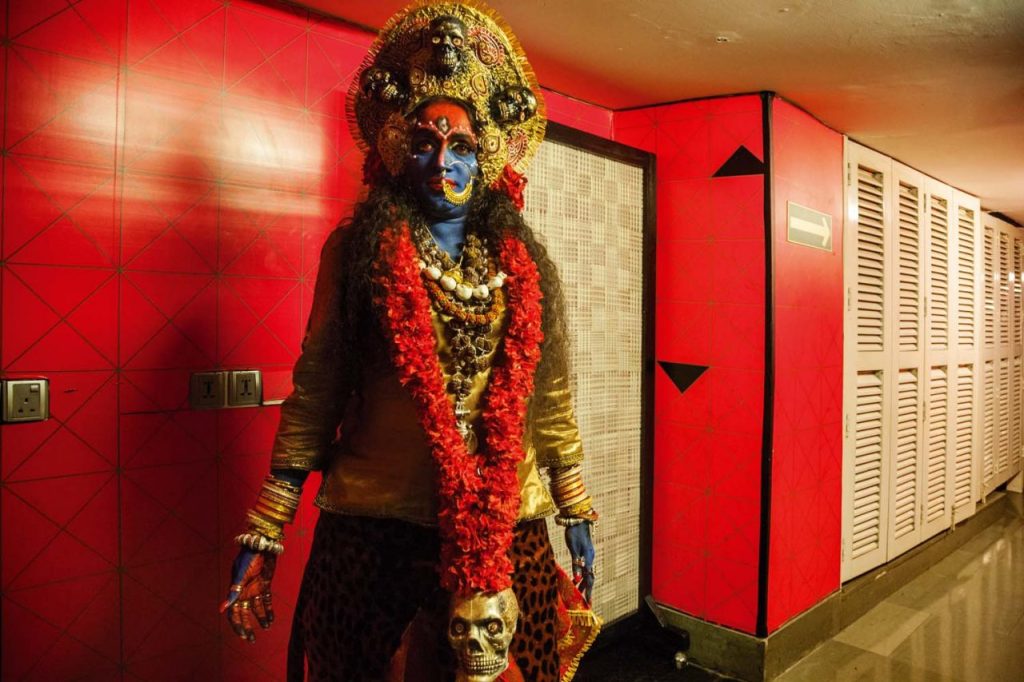Part -1 A gender not acknowledged: The Hijras and their struggle for representation
The major works by Indian photographers Anita Khemka, Dayanita Singh, and Tejal Shah are discussed in this section while addressing transgender identity in order to comprehend the various perspectives behind their research on transgender lives. Though the subject matter seemed to be similar, the three photographers’ approaches to documenting the lives of the Indian transgender community were vastly different.
Anita Khemka – Between the Lines -India’s Third Gender:
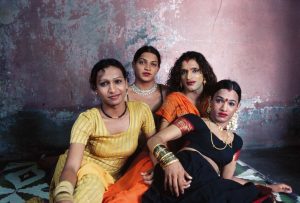
Courtesy:Anita Khemka
Anita Khemka is an inspirational figure in the field of photojournalism. She has spent the last 25 years photographing the lives of people in the hijra community, and she particularly developed a close relationship with Laxmi. Her work, which explores the complex details of Laxmi’s life while tackling more general issues among the Indian hijra community, is the topic of discussion. “Between the Lines: India’s Third Gender,” a 2005 documentary made by Thomas Watermann, explores the Mumbai hijra community, revealing the complexities of their relationships, challenges, and economic aspirations. Notably, Anita’s participation in the documentary—which began with her supporting Watermann—led to both her eventual inclusion in the movie and the development of a relationship, both personal and professional with transgender/hijra rights activist, Laxmi Narayan Tripathi.
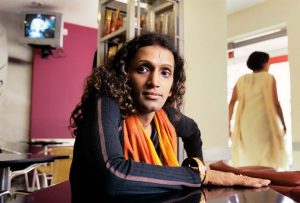
Anita’s photographic chronicle of Laxmi’s life is propelled by both personal considerations and a responsive engagement with reality. A conviction underpinning her creative process is the belief that a meaningful image necessitates an immersive experience in the subject’s lived realities. Childhood apprehensions towards hijras, characterized by their distinct appearance as sari-clad figures with facial hair and deep voices, gave way to a transformative journey as Anita voluntarily embedded herself within the community, initiating her photographic exploration. Initial trepidations, exemplified in her recollections of Munna Guru, were supplanted by a compelling curiosity regarding the gender ambiguity embodied by Munna. The photographic narrative continued until Munna’s demise in 2003, marking the onset of Anita’s acquaintance with Laxmi.
Laxmi’s narrative unfolds as the first son of a Hindu Brahmin family, rejecting binary gender identification and opting to join the hijra community. This community, constituting South Asia’s ‘third sex,’ encompasses eunuchs, intersex, and transgender individuals. Living on the societal periphery for centuries, hijras operate within closed communities, led by influential leaders referred to as gurus.
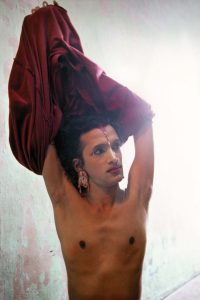
Laxmi, endowed with a natural aptitude for dance, utilised this skill as a coping mechanism in response to trauma. Embracing the traditional hijra practice of dancing and bestowing blessings in households with newborns, Laxmi strategically distanced herself from other avenues such as begging and sex work, showcasing charm and articulation. As Anita’s documentation progressed, Laxmi’s public profile ascended, earning her invitations to HIV conferences, transgender film festivals, and representation at the United Nations, positioning her as a symbol for hijras and sex workers alike.
The enduring camaraderie between Anita and Laxmi, stemming from their shared photographic endeavours, evolved into a lifelong friendship, as posited by Dasgupta (2020). A pivotal juncture in their association occurred when Anita discovered the details of Laxmi’s childhood abuse during a documentary project, profoundly influencing Laxmi’s sexuality and fostering a mutual commitment to the documentation process. Laxmi actively encourages Anita’s photographic pursuits, asserting that she will persist in being the subject until the inevitable cessation of either party.
Laxmi’s tumultuous internal struggles, coupled with external challenges posed by her community and society at large, remain indelibly etched in Anita’s recollections. Notably, Laxmi’s steadfast refusal to undergo castration as part of her initiation led to her being derogatorily labelled as a ‘behrupiya’ or an ‘impostor.’
Anita articulates a transformative sense of assimilation during the documentary process, expressing a profound alignment with the hijra culture and community. Her empirical understanding of hijra identity, rooted in periods of inhabiting a male embodiment, is elucidated as instrumental in comprehending the expectations, gestures, and aggressiveness associated with male societal roles. Despite the enactment of the Transgender Persons (Protection of Rights) Act in 2019, a substantial portion of the hijra population continues to reside on society’s fringes, dependent on begging or sex work for sustenance. In contrast, Laxmi Narayan Tripathi emerged as an exemplar embracing her hijra identity, subsequently advocating for transgender equality and welfare as an activist.
Dayanita Singh – Documentation of Mona Singh:
Dayanita Singh is a contemporary photographer and bookmaker. Singh’s book, on which she worked for a decade and which was published in 2001, chronicles the life of her friend Mona Ahmed through letters and photographs. Mona Ahmed, a third gender living on the outskirts of society in India, died at the age of 81, leaving behind a rich legacy documented by her official photographer, Dayanita Singh. Mona was a complex, one-of-a-kind individual who became Singh’s closest friend, leading to spiritual companionship and a friendship that transcended class and generation. Mona was born in pre-independence India and was abandoned by her family due to her gender and the hijra community due to her unconventional choices. She lived in an Old Delhi cemetery until her death in 2018. Singh met Mona while filming the hijra community. Their friendship was unusual, which Singh documented in photographs, some of which she included in the book.
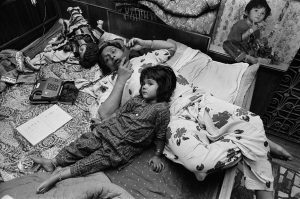
Sexual identity is a terribly visual grammar, from the doctor who assigns a baby’s gender to the law that aims to legislate who is and is not trans, as in India’s 2019 Transgender Persons (Protection of Rights) Act. Everyone is dependent on sight. To interpret a photograph solely based on its immediate visual information is to demand the same visibility that kills trans people. “Myself Mona Ahmed” comes at a time when trans and hijra lives were less common in Delhi’s queer politics. Singh’s book focuses on the gender gap between Mona (her hijra name) and Ahmed (her given name). Mona had carried and resisted the name Ahmed, which had been given to her by her mother and with which she had grown up. By adopting the name ‘Mona Ahmed’, she refused to abandon her past in order to live in the present. It was more than a gender divide; it was a schism between two worlds – of being hijra and with family, of blessings and respect, of leaving and being asked to stay. Mona Ahmed also rejected the neatness of the media’s ‘before-and-after’ trans stories, refusing to be completely occupied by one gender.
But, before all of this, Mona is a self, her own self, Singh’s ‘Myself’. Mona’s ‘Myself’ is an emphasis on her presence, an insistence, a refusal to accept the insignificance assigned to people of her kind. The name after that is only catching up with her. This self is the one who refuses to be indexed in the photograph. It is a refusal to be photographed or otherwise captured. Singh’s book offers opacity with care, presenting humbling images of Mona away from iconicity.
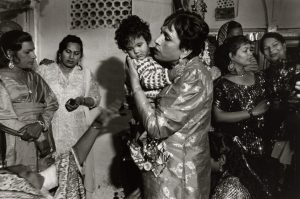
In photographs of her daughter’s birthday, Mona gently pushes her daughter’s cheek for a kiss, speaks with her community, and blesses those who join her in dance. However, as the pages turn, her lips draw closer together until they resign to silence. The book generates sonic frequencies of Mona’s journey, from the audacity of her song to the silence of her prayer. In one of the final images, Mona sits with her daughter and her guru, contemplating her own desertion as she comes to terms with her daughter’s growing distance from her. Her plight is illustrated in the scene, where she appears to be choking her words before they reach her mouth. These quiet images can form lumps in the viewer’s throats.

Mona’s sense of loss and desire for legacy was fuelled by her entitlement, and her destitution was demonstrated by her association with the ‘hapless’. She turned abandonment into a shelter after seeing a common cause with the ‘hapless’ – from mentally ill women to dogs and monkeys regarded as haram (sacrilegious). Mona refused to accept the loneliness that the world had assigned her, leading to her decision to build a home, a wedding hall, or a school in a cemetery which she often discussed through the letters. She believed in the present as if it were the desired future, and acted from the heart so that defeat did not crush her spirit. This strange intersection of caste and abandonment animated her dreams, symbolizing the practice of freedom. Trans people have marked their place at the table since Mona’s death; it is a fugitive act, as their needs are still considered illegitimate by the mainstream LGB movement. Returning to Mona is the conduct of commemoration. Mona is a force whose dreams continue to animate the present.
Tejal Shah – Hijra Fantasy:
Tejal Shah is a video, performance, and photography artist based in Mumbai. Her Hijra Fantasy Series is a collection of performative photographs featuring hijras that were featured in the multimedia exhibition What Are You? (2006). Shah’s theoretically informed work has addressed gender, sexuality, the body, and the interstitial spaces that exist within these categories but are suppressed by binaries such as male/female, straight/queer, and normal/abnormal. Her interest as an artist is in these spaces, which she explores in her work.
A hijra is a transgender man who may be a transvestite, a transsexual, an intersex person, or a castrated man. They are regarded with curiosity and fear in Indian society and typically live in marginalized communities with other hijras. The hijra communities are distinguished by multi-tiered hierarchies, with the naik at the apex and gurus and chelas below. Hijras have traditionally offered badhai or blessings and danced at weddings, childbirth ceremonies, and the inauguration of new businesses, but in recent years, fewer people have invited them to bless weddings or childbirths, leading the less fortunate among them to resort to Basti (begging) and pun (sex work). According to Laxmi Narayan Tripathi, a well-known hijra rights activist, the term “hijrotic” refers to something that is fundamentally hijra. The word appears to have a descriptive function, but when probed further, it reveals an intrinsically transgressive nature. It combines words that, in the popular imagination, are at opposite ends of the desired spectrum. By combining the words hijra and erotic, hijrotic merges hijra subjectivity, which is rarely thought to desirable or desiring, with eroticism. It is, therefore, more than an adjective: it is a self-affirming utterance.
The Hijra Fantasy Series dramatizes the fantasies of three hijra subject performers – Laxmi, Malini, and Maheshwari – in interviews with the artist. Shah advocates queer radical politics and attempts to unite her subjects under the banner of queerness. Initially, Shah assumed that her subjects’ deepest desires would be to become doctors, lawyers, or politicians, but instead, they articulated hyper-feminine fantasies of being Cleopatra, a mother, and a South Indian film star. While photographing Shah has combined both her subject’s wishes and her own creative process to some extent. Shah’s ‘What AreYou?’ explores the contractedness of gender in language and discourse, appealing to queer subjects seeking to challenge heterosexist and oppressive gender laws while also lending credibility to non-conformist gender performances.

Laxmi Narayan Tripathi’s performance of Cleopatra is a heteronormative construct that challenges conventional beliefs about how gender, beauty, and desirability relate. In her photograph ‘The Barge she sat in like a burnished throne/burnt on the water,’ the full moon illuminates a reclining Cleopatra and her companion Cupid. Cleopatra directs the audience’s attention to her eyes, Cupid’s penis, and his face, with the horizontal axis running along her body and the vertical axis meeting at an angle of 90 degrees. Shah’s depiction of this apex of the English literary canon, which for Indians also represents a colonial inheritance, upends conventional views of the playwright-poet from the 16th century. This has important ramifications for how we evaluate feminine beauty as a society.
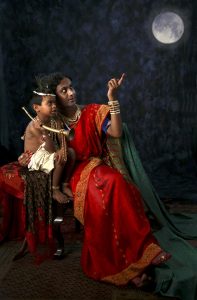
‘You Too Can Touch the Moon – Yashoda with Krishna’ is a portrait of a mother and child in a photographic studio. The setting is baroque and opulent, and the mother’s demeanour is tender. The artist’s desire to expand motherhood, make it relational, and disassociate it from biological reproduction is indicated in the caption. In the second half of the caption, Shah refers to a painting by the famous Indian painter Raja Ravi Varma, also titled Yashoda and Krishna. Shah’s image of Malini as Yashoda, the shepherdess who adopted the mischievous child God Krishna, reminds the viewer of traditions about hijras, cross-dressing, and sex transformation in the Vedas, Puranas, Mahabharata, and Ramayana. This image undermines Varma’s nationalist-utopian vision of Hinduism, its deities, and the Hindu woman, and highlights hijra motherhood, a phenomenon that is still not widely acknowledged.
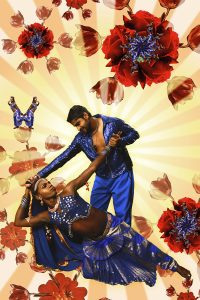
Ultimately, viewers see Maheshwari and her partner in ‘Southern Siren – Maheshwari’ become enthralled by one another’s stare. They are stuck in a South Indian movie still while participating in a song and dance performance. They exchange passionate, adoring looks. Even though he is mesmerized by her presence, she appears to be aware that we are looking at the scene from outside the frame. Southern Siren, a photograph by Maheshwari, is a celebration of love and self-affirmation. Behind the ‘hero,’ a light source radiates out and envelops both lovers in its brilliance. The caption highlights Maheshwari as the object of desire. The rose is a popular symbol of the queer movement in India and is used as a metaphor for same-sex/queer love, reminiscent of the kiss in older Hindi films.
Both Maheshwari and Laxmi’s want desirability but express it in different emotional tones – the former as assertive yearning, the latter as aggressive desire. Maheshwari’s performance, like Laxmi’s, is hijrotic, and it successfully queers the popular South Indian film song. Intertextual encounters between Shakespeare, Raja Ravi Varma, and popular South Indian cinema meet hijrotic expressions in these photographs, helping to queer dominant sites and foreground desires very seldom seen in mainstream Indian media. Shah provokes “the pliability of gender” as the progressive theoretical nail on which her work and the identities of her subject rests, but one must speculate if this Initially reluctant idea holds more weight for the artist than for her subjects. Looking at the images, it appears that the subject’s performances and fantasies are motivated by a deep desire for the mimesis of femininity, even if their actions may contribute to the denaturalisation of gender.
Tejal Shah’s Hijra Fantasy Series delves into the lives of hijras prior to their erasure from history. The photographs call into question our understanding of the hijras, as well as the cruel lie we have been telling ourselves. We can no longer pretend that they are unknown men dressed as women and must face the brutal reality that so many transgender people have been abused and murdered in India.
References:
- Rana Dasgupta, 30th April 2020, “Laxmi”, Art & Photography, Granta 151, https://granta.com/laxmi/
- Shyama Laxman, “An inexplicable cord”, Hundred Heroines, https://hundredheroines.org/featured/an-inexplicable-cord-interview-anita-khemka-laxmi- hijra/
- Vikramaditya Sahai, 23rd October 2020, “Myself Mona Ahmed’: Revisiting Dayanita Singh’s Landmark Photobook”, Books-Opinions, Frieze, https://www.frieze.com/article/myself- mona-ahmed-revisiting-dayanita-singhs-landmark-photobookShahnaaz Signaporia, 8th August 2018, “When a friendship cuts across class and generation”, Vogue Newsletter, https://www.vogue.in/magazine-story/when-a-friendship-cuts-across- class-and-generation/Andrea Farnandez, “Hijra Fantasy”, Embody: Gender, Pix,
- http://www.enterpix.in/feature/embody-gender/hijra-fantasy/
- Subuhi Jiwani, Tejal Shah ,10th January 2010, “HIJROTIC: Towards a New Expression of Desire a critical introduction to Tejal Shah’s Hijra Fantasy Series by Subuhi Jiwani”,
- https://maydaymagazine.com/hijrotic-towards-a-new-expression-of-desire-a-critical- introduction-to-tejal-shahs-hijra-fantasy-series-by-subuhi-jiwani/

